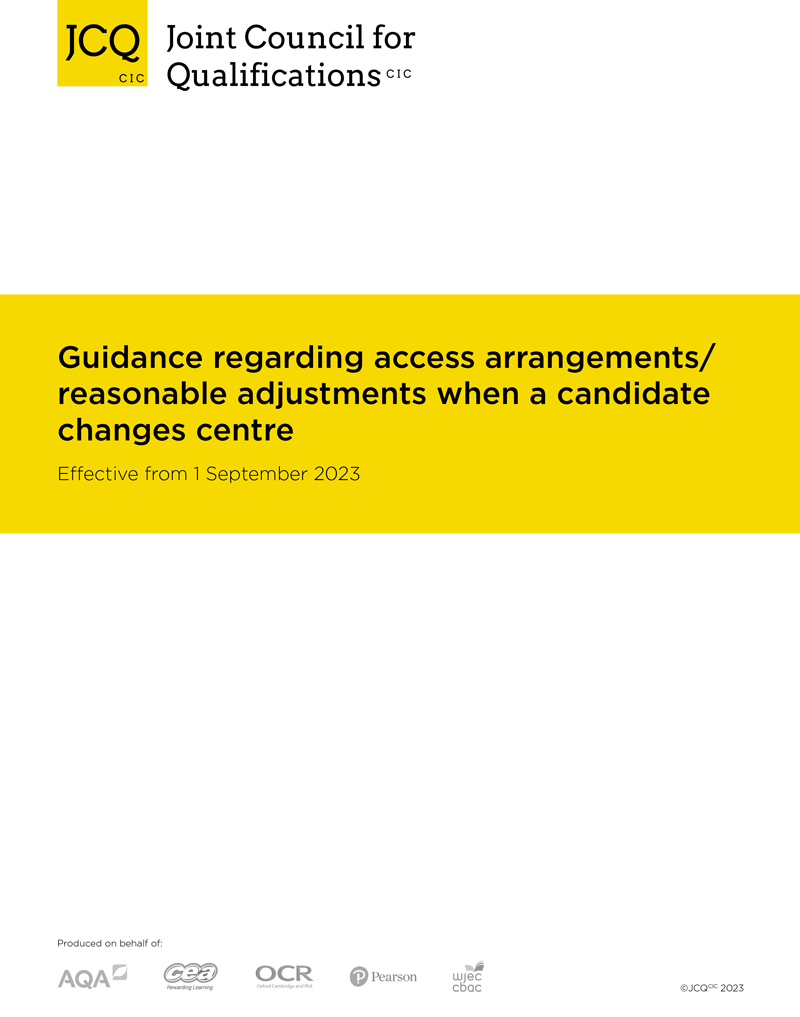- About
- Services
- Partners
- Events
- Jobs
- Courses

- About
- Services
- Partners
- Events
- Jobs
- Courses

Within the English Curriculum Exam systems, schools are able to provide students with accommodations to support them when sitting end of unit assessments, or formal examinations in senior years. Accommodations are changes to the way young people sit exams, such as a reader, extra time, or use of a laptop.
Louise and her team have implemented process, policy, and assessment for Exam Access Arrangements for 15 years.
The Joint Council for Qualifications (JCQ) is a key consortium of seven providers of qualifications in the United Kingdom. JCQ ensures that the exams and qualifications offered by its member organizations meet rigorous standards and are recognized nationally and internationally.
JCQ plays a crucial role in the development and administration of GCSEs, A-levels, and vocational qualifications, setting the regulations and procedures that schools and colleges follow.
Louise has studied and is qualified in supporting learners under the Joint Council for Qualifications (JCQ). This certification reflects her expertise and commitment to maintaining the highest standards in educational support, ensuring that all learners receive the best possible guidance and assistance.

These students require extra support to meet their learning objectives. This may include tailored teaching methods, additional resources, or modifications to the learning environment. A student who is not identified as having special needs may qualify for accommodations such as use of a word processor or a separate room.
These students have documented physical disabilities or conditions that impact their ability to participate fully in exams without adjustments or accommodations. These might be students who are unable to write or need alternative locations due to wheelchair use.
These students have recognised difficulties in social interactions and communication, which may affect their exam performance and necessitate specific accommodations.
Students may have a condition known as Autism or may have exam anxieties which inhibits performance.
These students have diagnosed emotional or psychological conditions that can impact their exam performance, requiring supportive measures to help manage stress and anxiety.
Some conditions such as ADHD may require additional support.
These students have documented special educational needs, which may include a range of cognitive, physical, or emotional challenges that require specific exam arrangements.
These conditions may include Dyslexia, Dyspraxia, Dyscalculia, Dysgraphia.
These students do not have a formal diagnosis but exhibit signs of needing extra support. They may be assessed for Exam Access Accommodations based on observations and discussions with stakeholders, including the school, parents, and therapists.
Accommodations are put into place to enable a student equal and fair opportunity to access formal examinations, in line with their peers. Students with specific learning barriers are disadvantaged by standard exams and EAA rectifies these challenges providing equity.
Students are allowed to use a computer to type their exam responses instead of writing by hand.
This is particularly helpful for those with handwriting difficulties, physical disabilities, or specific learning needs.
Extra time is allocated to students to complete their exams.
This accommodation is provided to those who require a slower pace due to learning disabilities, processing speed challenges, or physical or emotional needs.
A scribe writes down the student’s dictated answers during the exam.
This assistance is beneficial for students with physical disabilities, severe handwriting issues, or other conditions that impact their ability to write.
A designated person reads the exam questions aloud to the student.
This accommodation supports students with visual impairments, reading difficulties, or other conditions that affect their ability to read text independently.
For years 7 to 9 the Head of Inclusion / SENCo can grant internal EAA based on their expertise and experience.
External documentation is not always required. They are agreed following student, parent, teacher, leadership, and therapist input (where appropriate).
For years 10-13, to be eligible for EAA during formal external assessments students must reach a certain criteria during Year 9.
The decisions on these assessments is taken through consultation with student, parent, teachers and the Inclusion Team and a known history of need.
Parents should not seek external validation from therapists without consultation of the Inclusion Team. Not all external validation is recognised by the UK Exam Boards.
Louise Dawson’s qualifications are recognised by the UK Exam Boards.
Schools should reduce the anxiety and expense to the family surrounding external assessment and will support and advise of different options and costs appropriately.
The UK Examination Boards require schools to keep a record of the EAA taken by a student throughout their academic career in order to prove that this is a student’s “normal way of working”.
For example, if a student is allocated EAA of a laptop but then does not use it the right to use needs to be removed.
A student in Year 7-9 is deemed old enough to decide upon their use of EAA.
Schools should be committed to ensuring that students understand their rights and will make appropriate recommendations.
It is common for Year 7-9 students to refuse their support and their decision has to be complied with.
The Inclusion Team will work closely with the student on an ongoing basis and it is our experience that by the time the student really ‘needs’ the EAA they often request it.
Louise Dawson is not an Educational Psychologist or medical professional. She is a qualified & experienced Mainstream and Special Needs Educator. She is also a qualified Educational Tester registered with the British Psychological Society (RTQ523138). The company is licensed by the Knowledge and Human Development Authority (KHDA 631325) and Dubai Economic Department (DED 969248).